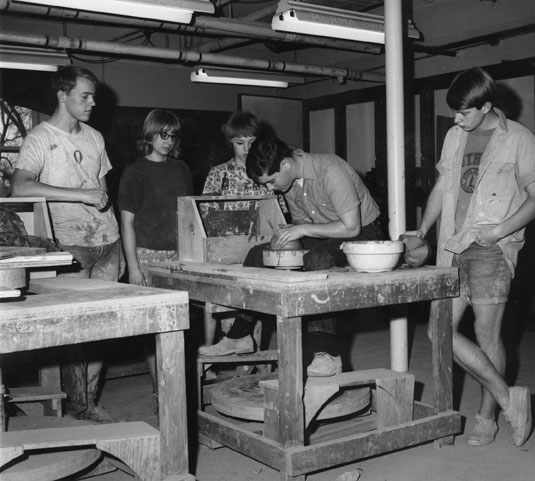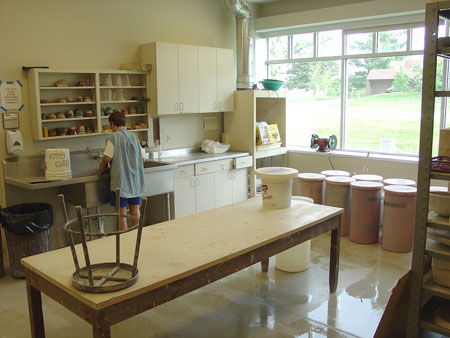STONEWARE PROCESS
In general most of my clay work is dependent on knowing a considerable amount about a limited glaze and colorant pallet. Results generally develop after repeated trial and error and a lot of experience with the clay body employed and relevant forming processes. Critical to each technique is a sound understanding of the relationship between clay, glaze and the designated firing process or processes. Sometimes aesthetically pleasing results are amazingly simple to achieve, however, aesthetic problems coupled with innovation and self-expression can demand a high level of technical ability regardless of the ceramic process employed.

I was introduced to stoneware as an undergraduate and have used it for educational purposes ever sense.
Stoneware usually employs a two part firing process. First the work is bisque fired, cooled and then glazed with liquid glaze, stain, etc. Then the glazed pieces are fired a second time at a much higher temperature. The pieces illustrated were last heated to about 2350 degrees Fahrenheit in a gas-fired kiln.
There are many variables that can change the color of a stoneware glaze fired with a gas kiln; the thickness of the application, temperature in the kiln, color of the clay body, and the adjustable ratio of oxygen and gas going into the kiln at a given time.

Most of the stoneware pieces pictured have been made for classroom purposes. Though there are usually a dozen or so class glazes to choose from these were glazed using combinations of just two or three.
